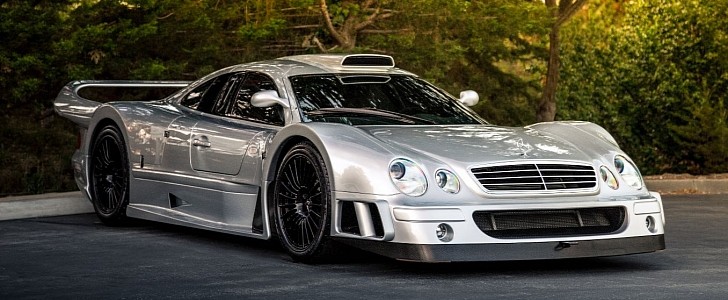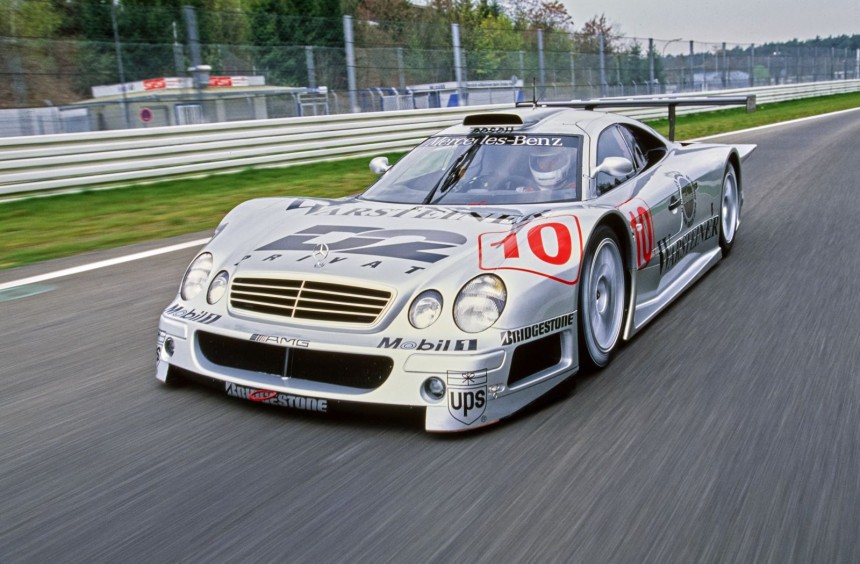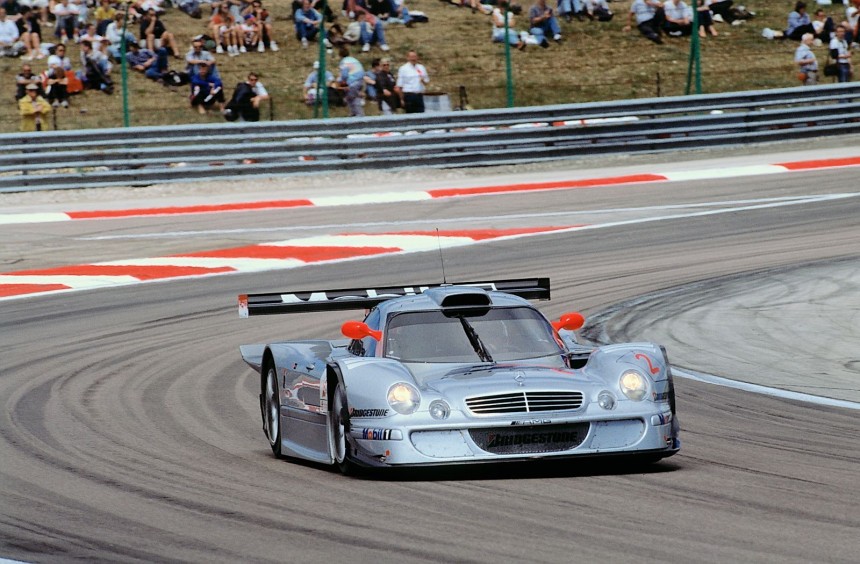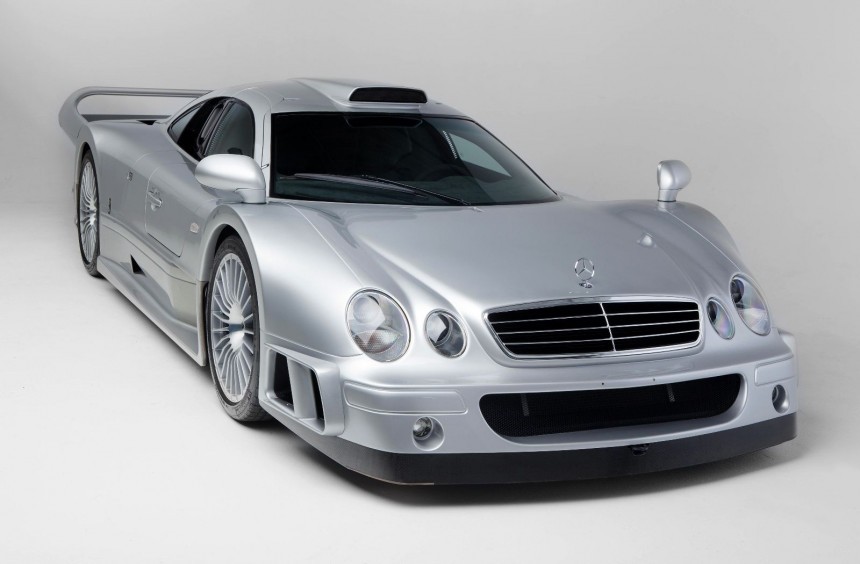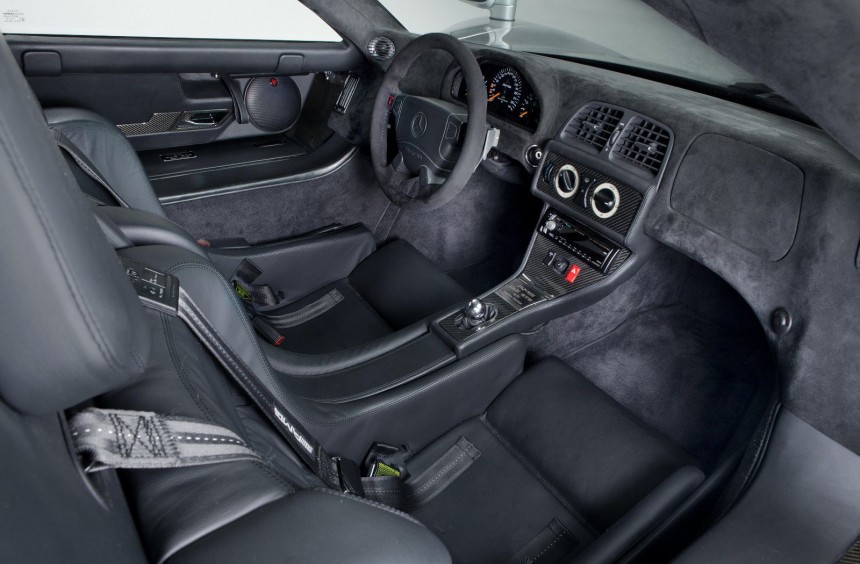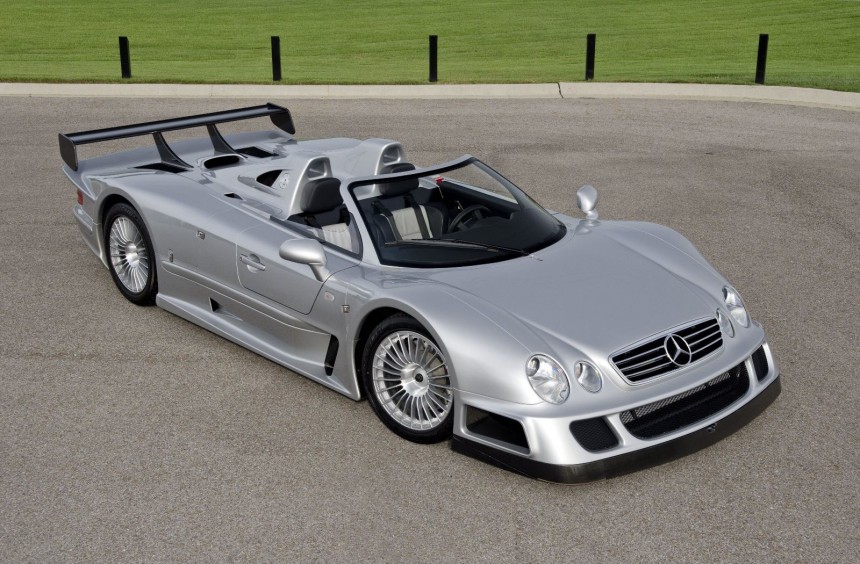The long-standing collaboration between Mercedes and AMG gave birth to some legendary high-performance vehicles revered by enthusiasts worldwide. Undoubtedly the most outrageous of all is the CLK GTR, a successful race car and one of the most extreme road-legal supercars of its era.
In 1993, the motorsport world had to do without endurance racing since the World Sportscar Championship (WSC) season was canceled due to a lack of entries. Development costs were at an all-time high, so manufacturers elected not to participate in the competition and instead concentrate their efforts on other forms of racing.
Luckily, former Le Mans winner Jurgen Barth, Patrick Peter, and Stephane Ratel became the saviors of endurance racing by creating the BPR Global GT Series in 1994. The competition quickly became popular and eventually lined up supercars such as Ferrari F40, Lotus Esprit, Jaguar XJ220, De Tomaso Pantera, or McLaren F1 GTR. The latter proved to be too much for the competition, dominating virtually every race it entered and winning the 1995 and 1996 seasons.
By the end of 1996, the FIA announced that it would take over the series and rebrand it into the GT Championship. The organization also modified the rules to increase competitiveness and attract more manufacturers.
One of the carmakers which decided to join the revamped competition was Mercedes-Benz. It partnered up with AMG once again after a triumphant season in the DTM, and the team's goal was to put an end to McLaren’s hegemony in the premier GT1 class. The first thing they did was acquire an F1 GTR, a move that allowed them to speed up the development of a brand-new car.
Engineers swapped the BMW 6.1-liter V12 with an AMG-tuned 600-hp twelve-cylinder and fitted several custom body panels onto the McLaren test mule. By doing this, they extensively tested the powerplant and refined the overall aerodynamics while the bespoke carbon fiber and aluminum monocoque chassis were still being constructed. Thus, only 128 days after the start of the development program, the first two CLK GTR prototypes were ready to go.
The 1997 season didn’t start as well as the team hoped, as the BMW Motorsport McLarens defeated them in the first three races. That changed after the fourth round held at Nürburgring, where they managed a 1-2 finish. After that, the CLK GTR crossed the finish line first on another five occasions, and Mercedes ultimately secured the manufacturers’ title while Bernd Schneider took home the drivers’ trophy.
For 1998, the team didn’t just aim to defend their title but also return to Le Mans, the legendary endurance race that Mercedes last entered in 1991 with Michael Schumacher among the drivers.
Now called CLK LM, the car’s bodywork was extensively reworked, and the engine was replaced with a heavily modified version of the M119-derived V8 that powered the Sauber C9 and Mercedes-Benz C11 Le Mans prototypes.
Codenamed GT108B, the new unit was deemed lighter and more reliable by the engineers in Affalterbach, but in France, it suffered major malfunctions in both cars, ending AMG-Mercedes’s dream of winning the famous 24-hour race.
However, in the FIA GT Championship, the team won every single race of the season, with Klaus Ludwig and Ricardo Zonta sharing the drivers’ title.
After being humiliated by the rabid Mercs, many competing manufacturers pulled out of the GT1 class for the 1999 season, so the FIA had to cancel the category. The move put an end to the highly successful career of the CLK GTR and LM, which will forever be remembered as the race cars that managed to achieve the impossible and make the McLaren GTRs look slow.
Mercedes and AMG would develop the CLR that year and return to Le Mans, but the car only managed to rise above its competitors in a literal sense. Due to poor aerodynamics, two cars became airborne during qualifying and the actual race, crashing spectacularly and ending the German manufacturer’s involvement in prototype racing.
To compete in the FIA GT Championship GT1 class, every manufacturer had to build at least 25 road-going versions of their race cars. The first prototype was built in 1997, and the rest came out of the Affalterbach plant between the winter of 1998 and the summer of 1999.
Officially named CLK GTR AMG Coupe Strassen (street) Version, this epic car was nearly identical to the 1997 racer. The carbon fiber and aluminum monocoque, double wishbone suspension, braking system, and much of the bodywork were carried over, with only the rear wing completely different.
Although it bore the CLK nameplate, the only components it shared with the mass-produced models were the headlights and taillights.
Lifting the dihedral doors revealed a cockpit that featured two full-leather bucket seats, air conditioning, a stereo system, and an abundance of Alcantara. The steering wheel was also redesigned, and since this was a time when Mercedes didn’t use paddle shifters, drivers could operate the sequential transmission using buttons mounted on each horizontal spoke.
The V12 engine’s displacement was increased to 6.9 liters, and the air restrictor was removed, leading to an output of 604 hp (450 kW) at 6,800 rpm and 572 lb-ft (775 Nm) of torque at 5,250 rpm.
Mercedes claimed that the road-legal CLK GTR could accelerate from zero to 60 mph (96 kph) in 3.7 seconds and reach a top speed of 214 mph (344 kph). These figures made it one of the fastest production cars of the era, and with a starting price of about $1,550,000, it was also one of the most expensive.
An additional prototype and four other production-spec cars were fitted with a newer version of the M297 engine, which displaced 7.3 liters. The output was increased to a massive 655 hp (488 kW) and 580 lb-ft (786 Nm) of torque—it is the same unit used to power several editions of the Pagani Zonda. Dubbed CLK GTR Super Sport, these cars also gained an additional front splitter for better stability at high speeds.
In total, 20 units and two prototypes were built, but that wasn’t enough to meet FIA requirements, so AMG’s newly established HWA division was tasked with developing six additional roadsters. These variants were equipped with a separate rear wing similar to the 1997 racers and a different front grille that was highlighted by a big Mercedes logo.
Because of their outrageousness and rarity, these incredible machines have become some of the most sought-after supercars of all time. They rarely show up at auctions, but when this happens, they demand six-figure prices.
The CLK GTR and GTR LM race cars and the street-legal versions remain some of the most extreme vehicles born out of the long-standing collaboration between Mercedes-Benz and AMG. Posters featuring these vehicles adorned the walls of many kids back in the late 1990s (myself included), and those who were lucky enough to get a glimpse of one in the wild will never forget the jaw-dropping experience.
Luckily, former Le Mans winner Jurgen Barth, Patrick Peter, and Stephane Ratel became the saviors of endurance racing by creating the BPR Global GT Series in 1994. The competition quickly became popular and eventually lined up supercars such as Ferrari F40, Lotus Esprit, Jaguar XJ220, De Tomaso Pantera, or McLaren F1 GTR. The latter proved to be too much for the competition, dominating virtually every race it entered and winning the 1995 and 1996 seasons.
By the end of 1996, the FIA announced that it would take over the series and rebrand it into the GT Championship. The organization also modified the rules to increase competitiveness and attract more manufacturers.
The Race Cars
Engineers swapped the BMW 6.1-liter V12 with an AMG-tuned 600-hp twelve-cylinder and fitted several custom body panels onto the McLaren test mule. By doing this, they extensively tested the powerplant and refined the overall aerodynamics while the bespoke carbon fiber and aluminum monocoque chassis were still being constructed. Thus, only 128 days after the start of the development program, the first two CLK GTR prototypes were ready to go.
The 1997 season didn’t start as well as the team hoped, as the BMW Motorsport McLarens defeated them in the first three races. That changed after the fourth round held at Nürburgring, where they managed a 1-2 finish. After that, the CLK GTR crossed the finish line first on another five occasions, and Mercedes ultimately secured the manufacturers’ title while Bernd Schneider took home the drivers’ trophy.
For 1998, the team didn’t just aim to defend their title but also return to Le Mans, the legendary endurance race that Mercedes last entered in 1991 with Michael Schumacher among the drivers.
Codenamed GT108B, the new unit was deemed lighter and more reliable by the engineers in Affalterbach, but in France, it suffered major malfunctions in both cars, ending AMG-Mercedes’s dream of winning the famous 24-hour race.
However, in the FIA GT Championship, the team won every single race of the season, with Klaus Ludwig and Ricardo Zonta sharing the drivers’ title.
After being humiliated by the rabid Mercs, many competing manufacturers pulled out of the GT1 class for the 1999 season, so the FIA had to cancel the category. The move put an end to the highly successful career of the CLK GTR and LM, which will forever be remembered as the race cars that managed to achieve the impossible and make the McLaren GTRs look slow.
Mercedes and AMG would develop the CLR that year and return to Le Mans, but the car only managed to rise above its competitors in a literal sense. Due to poor aerodynamics, two cars became airborne during qualifying and the actual race, crashing spectacularly and ending the German manufacturer’s involvement in prototype racing.
The Road Cars
Officially named CLK GTR AMG Coupe Strassen (street) Version, this epic car was nearly identical to the 1997 racer. The carbon fiber and aluminum monocoque, double wishbone suspension, braking system, and much of the bodywork were carried over, with only the rear wing completely different.
Although it bore the CLK nameplate, the only components it shared with the mass-produced models were the headlights and taillights.
The V12 engine’s displacement was increased to 6.9 liters, and the air restrictor was removed, leading to an output of 604 hp (450 kW) at 6,800 rpm and 572 lb-ft (775 Nm) of torque at 5,250 rpm.
Mercedes claimed that the road-legal CLK GTR could accelerate from zero to 60 mph (96 kph) in 3.7 seconds and reach a top speed of 214 mph (344 kph). These figures made it one of the fastest production cars of the era, and with a starting price of about $1,550,000, it was also one of the most expensive.
In total, 20 units and two prototypes were built, but that wasn’t enough to meet FIA requirements, so AMG’s newly established HWA division was tasked with developing six additional roadsters. These variants were equipped with a separate rear wing similar to the 1997 racers and a different front grille that was highlighted by a big Mercedes logo.
Because of their outrageousness and rarity, these incredible machines have become some of the most sought-after supercars of all time. They rarely show up at auctions, but when this happens, they demand six-figure prices.
The CLK GTR and GTR LM race cars and the street-legal versions remain some of the most extreme vehicles born out of the long-standing collaboration between Mercedes-Benz and AMG. Posters featuring these vehicles adorned the walls of many kids back in the late 1990s (myself included), and those who were lucky enough to get a glimpse of one in the wild will never forget the jaw-dropping experience.
